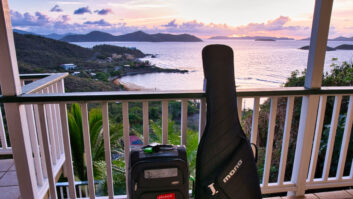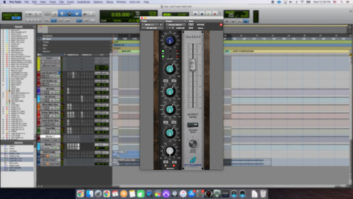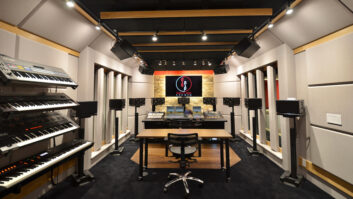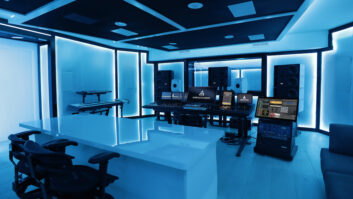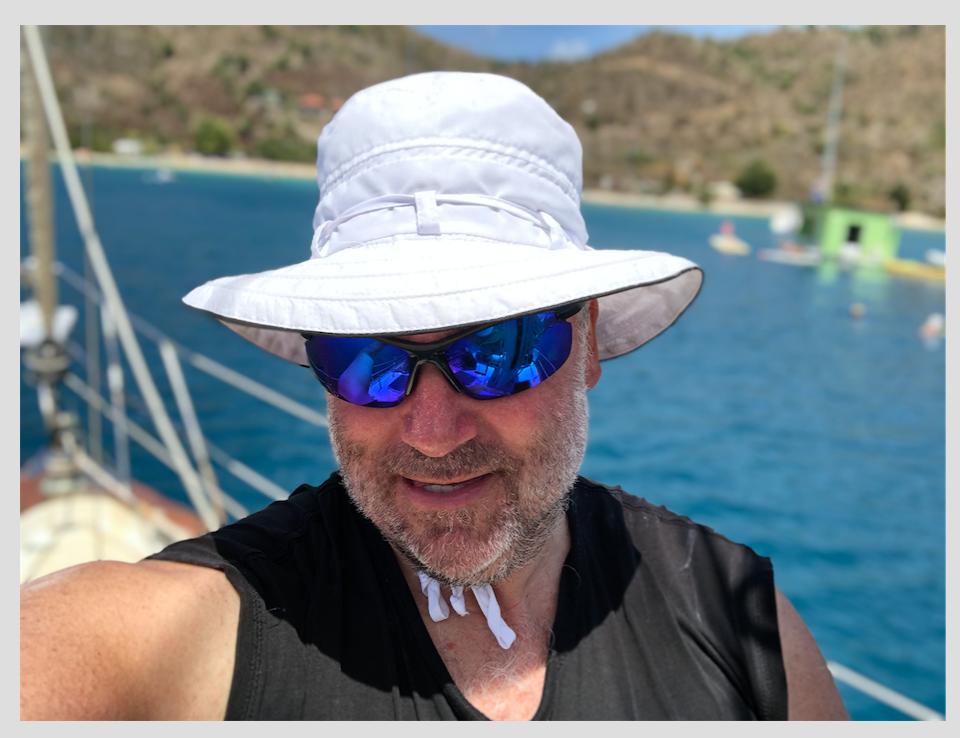
This year’s recording adventure down in St. John, U.S. Virgin Islands, was another example of how carefully selected, small but powerful gear can deliver superb results. The island has recovered quite a bit since the devastation of 2018’s Hurricane Irma, and while not yet 100 percent, it’s headed in the right direction. Composing, recording and sharing knowledge for two straight weeks side-by-side with a top-flight team that included engineer/keyboardist Bruce MacPherson (Fleetwood Mac, Yes), engineer Mike Dwyer (Shawn Mendes, Bob Weir, The National), drummer Ray Levier, singer/guitarist Scott E. Moore and bassist Hank Skalka (who owns the house) was both an education and a delight.
Taking the time to curate a gear list in advance, we flew down with just enough equipment to get several collections of TV music done, which ranged from edgy BBQ Blues to pulsing Electro Crime, as well as some cool tracks for Animal Planet. We also had time to stretch out and play a few shows in town, which is always a blast. We discovered once again that the limitations of the gear and instruments forces you to improvise and work differently—a situation that is both challenging and rewarding.
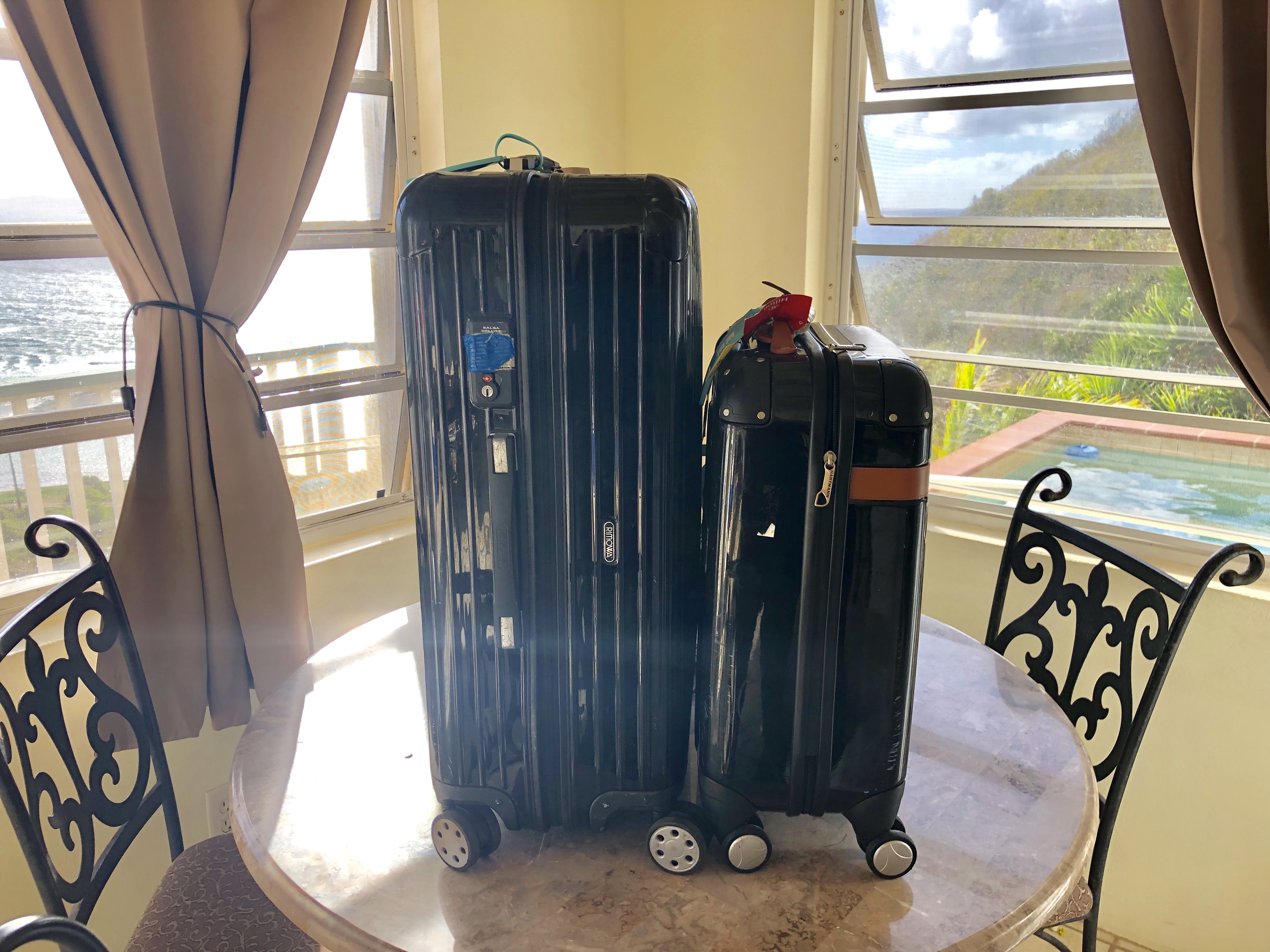
We were unsure but excited about what was ahead of us. When the Delta Airlines captains were kind enough to make room for three of our instruments on the flight down, we had a feeling this was going to be good. And it was. Here’s the gear that found its way into our studio and daily workflow.
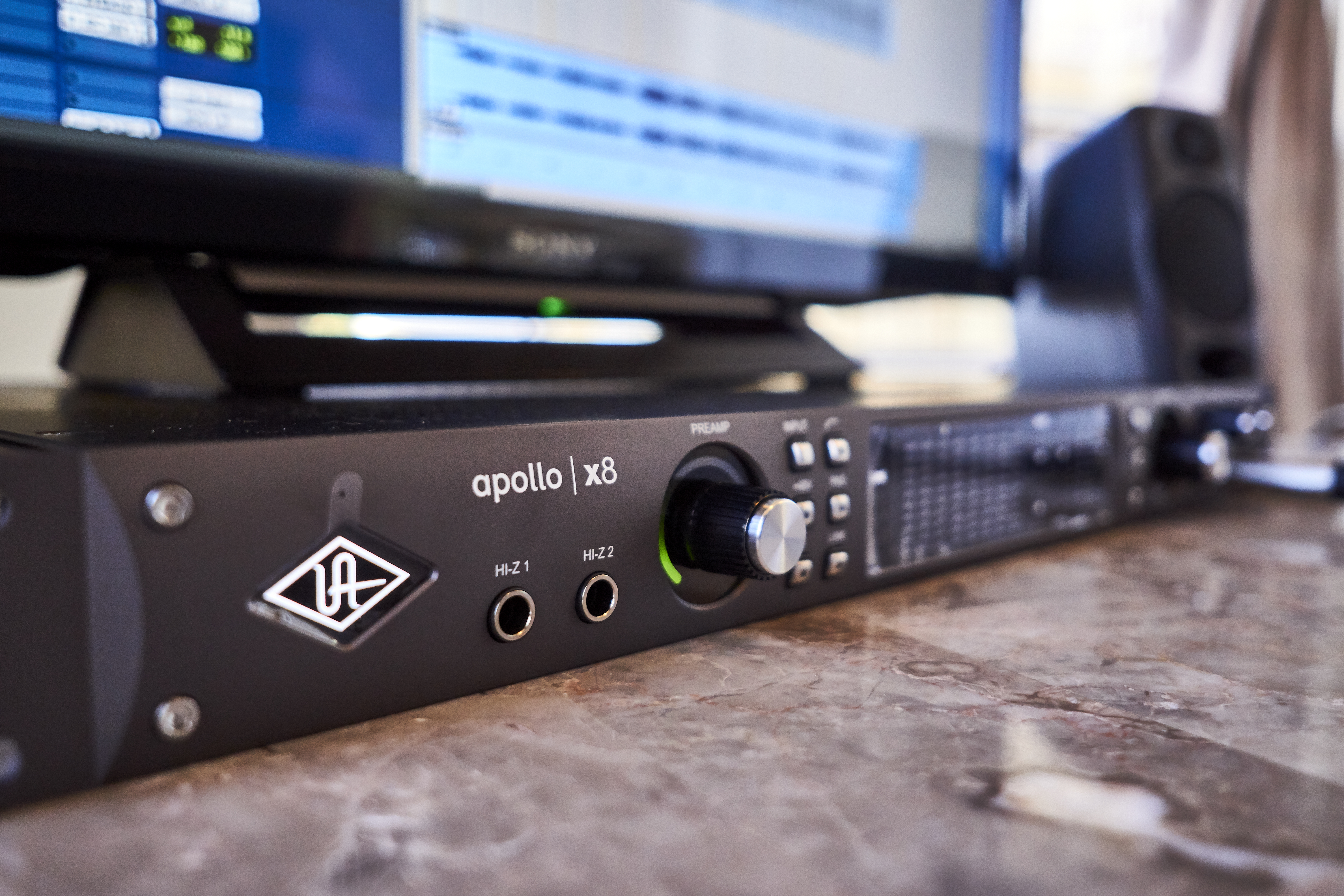
Universal Audio Apollo x8
The Apollo x8 audio interface was the brains of the whole St. John recording and production chain this year. Featuring Thunderbolt 3 audio connectivity to our MacBook Pro laptops, it offers HEXA Core processing with six DSP chips, 18 ins/24 outs with 24-bit/192 kHz performance, four XLR preamps on the back, +24 dBu operation, two Hi-Z inputs on the front, two headphone outs, upgraded AD/DA conversion, and full metering. In short, it was just what we needed to turn a house into a fully functioning remote studio.
Since FedEx wanted $380 to ship it one way, we decided to fly it down in a small gear case, packed in bubble wrap. It arrived just fine and we relied on it to take in all of our outputs, connect to our headphone amp, connect to our speakers, run all of the UAD plug-ins, and allow us recording control using the UA Console software.
Since I’ve used every version of Apollo since the line first came out, I can say unequivocally of the x8 that these preamps are the best yet—by far. They have more top, bottom and depth than the previous generation, and I would put them up against some of the best preamps out there. Having Thunderbolt connectivity meant a single cable from the laptop to the x8, which provided us low latency and better stability than USB or FireWire. As a side note, it’s good to know that the Thunderbolt 3 ports are backward-compatible with Thunderbolt 1 and 2 Macs (with an adapter).
In the course of daily use, it earned its position at the center of our workflow. Sometimes we would use the front Hi-Z inputs, other times the XLRs on the back. We ran some of our favorite plug-ins, such as the Lexicon 480L and 224 on percussion and pads, the AKG BX 20 on Hammonds and electric pianos, Ocean Way Studios and EP-34 Tape Echo on guitars, and the AMS RMX-16 on most everything. Of course, we turned to some of the classic compressors like the LA-2A and 1176 for attitude, some Pultec and Manley EQ, and got some great sounds with the Unison-enabled Ampeg B-15N on bass and Fuchs Train II and Suhr SE100 on guitar. In the end, the Apollo x8 not only sounded great, but it proved to be flexible, got plenty of chip power and delivered on everything we needed it to.
Universal Audio • www.uaudio.com
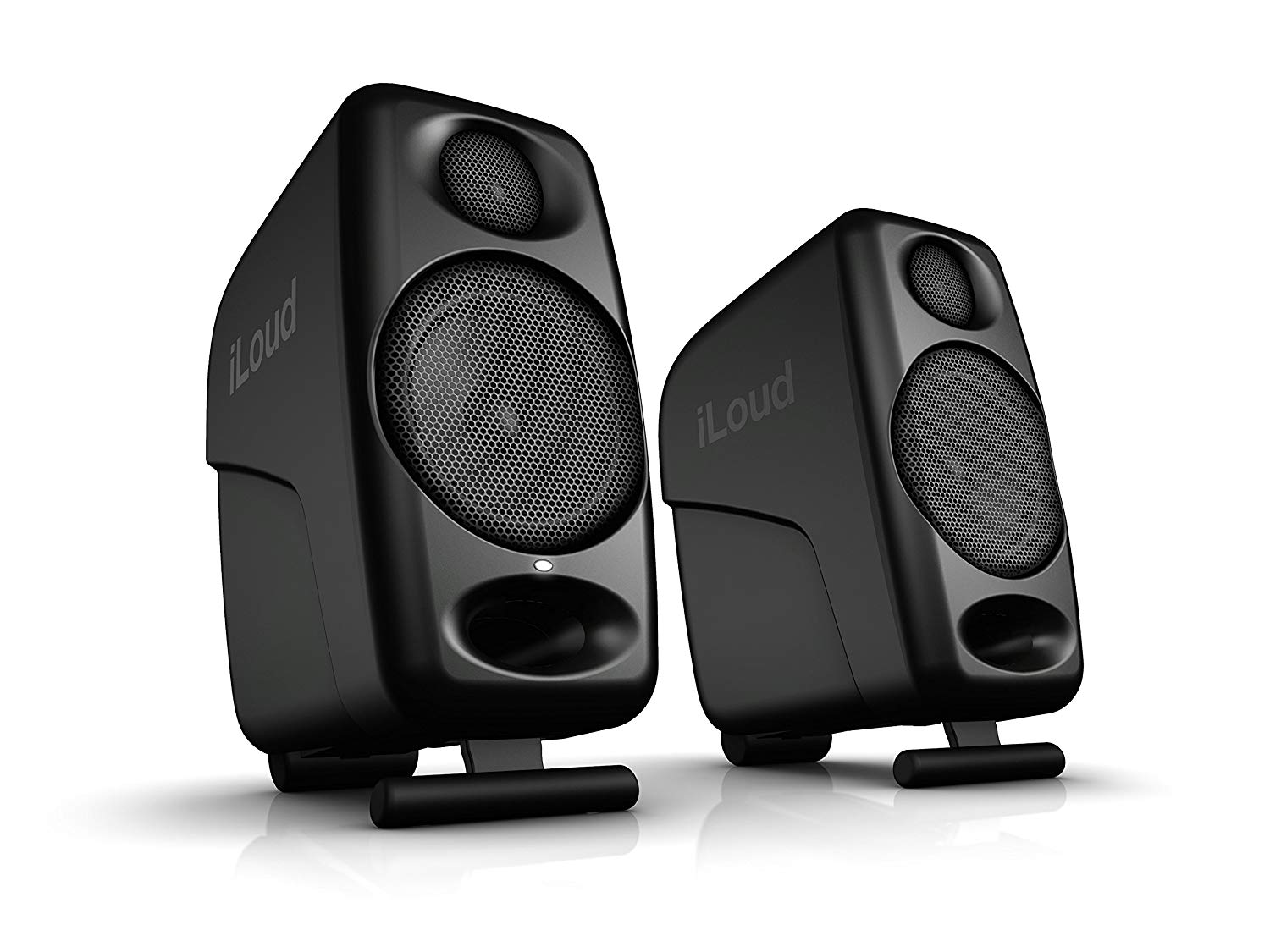
IK Multimedia iLoud Micro Monitors
I’ve long been on the hunt for a set of small but powerful speakers that can actually deliver on tone, volume and attitude for mobile sessions. While in L.A. this January, I stopped in to visit veteran Hollywood sound designer Scott Gershin, who had a set of iLouds sitting next to one of his many monitors. When he played them for me, I not only looked for the subwoofer (that wasn’t there) but I was floored by the amount of sound coming out of these two ultra-compact monitors. Knowing the St. John trip was upcoming, IK was kind enough to send a pair along, and wow, am I glad they did.
The Micro Monitors feature a 3/4-inch tweeter, 3-inch woofer, bass reflex port, activity LED and a cool, adjustable isolation base that swings out when needed. The rear features a Bluetooth pairing button, volume control, EQ positioning switches for Flat or Desk (desktop), Flat or +2 HF and Flat or -3 dB LF, TRS 1/8-inch stereo input, RCA inputs, a L/R speaker link, power switch and connection for a power supply, and a UNC 3/8-16 mic stand thread. These two-way active bi-amped speakers deliver a combined 50W RMS of power with remarkably flat 45 Hz–22 kHz specs and sit comfortably next to a monitor or on a mixing desk. The pair come with a power supply unit, power supply cable, 4-pin speaker connection cable and a TRS 1/8-inch stereo to 2x RCA cable.
Reviewing Pro Audio Gear in Paradise: Rich Tozzoli’s Fifth Annual St. John Recording Retreat, by Rich Tozzoli, May 3, 2018
I bought a small iLoud speaker bag before the trip and was able to pack them easily into one of the suitcases for the journey. When we arrived in St. John, we set them up on their own tilt stands and plugged them into the Apollo x8 via a set of 1/4-inch to RCA connectors—and were shocked by what came out of them. The sound was plenty loud to fill the room, but more importantly, it was clean and clear, with a remarkable amount of bass. I commented that not only could I track on these, but with a little time, I could mix on them. That’s a surprising and shocking statement for pair of light, small speakers that run less than $300.
During the two weeks, we pushed them hard, and yes, they will compress and clip if you hit them with too much, but they can take a surprising amount of volume. They were, without exception, one of the hits of the trip. Since they include Bluetooth functionality, we also used them as a music playback system from our iPhones. I will be using these on every mobile session I do from now on.
IK Multimedia • www.ikmultimedia.com
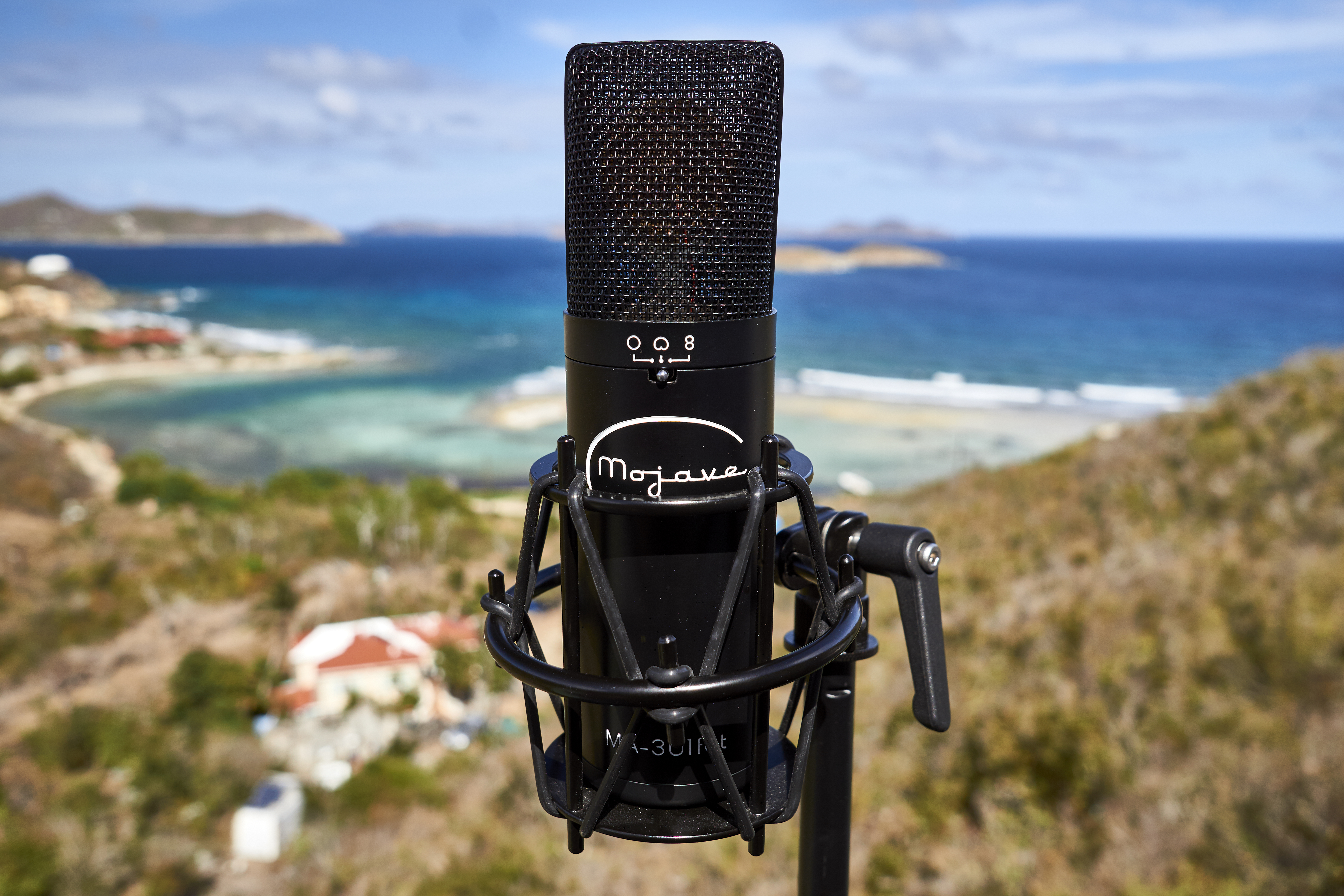
Mojave Audio MA-301fet
As is our routine on these journeys, we keep the number of microphones to a minimum, which means we have to hope the ones we choose will deliver (and don’t need a separate power supply). Based on word-of-mouth from some well-respected engineer/producers, we selected the Mojave MA-301fet as our only mic on this trip.
The MA-301 is a large-diaphragm condenser built on the foundation of the company’s popular MA-201fet, with the addition of three polar patterns (cardioid, omni, figure-8), a low-cut filter and a 15 dB pad. Inside is a Jensen audio transformer, military-grade FET, 3-micron gold-sputtered capsule and custom low-noise resistors. It’s got 20 Hz to 20 kHz specs with a max SPL of 135 dB with the pad on. It comes with a well-built shockmount, and overall, it has quite a solid feel to it, weighing in at 1 pound.
Is it challenging to record with one mic? Yes, but this one was up to the task. We used it for a wide variety of sources including cymbals, toms, kicks and shakers, which were all recorded as sound design elements for crime tracks. For some of the other rhythm tracks, we captured hi-hats, a cajon and vocals.
I made a few observations about this mic after working with it for two weeks. First, it has a clarity to it that allows it to cover a lot of ground with ease. The lows it captures are thick and solid, and when it was too much (we tended to mic quite close), we just rolled off the bass switch, which provided 6 dB per octave below 100 Hz. On vocals—which we honestly didn’t do much of—it captured air and depth. You can play with the mids quite a bit by changing how far or close you get to it, all with very little self-noise.
It can take compression quite well and retain much of its natural flavor. We tended to push a lot of these elements quite hard with things like aggressive 1176-style compression, and it always held up for us.
We were concerned that the island humidity was going to affect the capsule because we had the doors open most of the day. Not once did we have a problem with it. The Mojave MA-301fet turned out to be an excellent all-around mic that can cover a lot of ground.
Mojave Audio • mohaveaudio.com
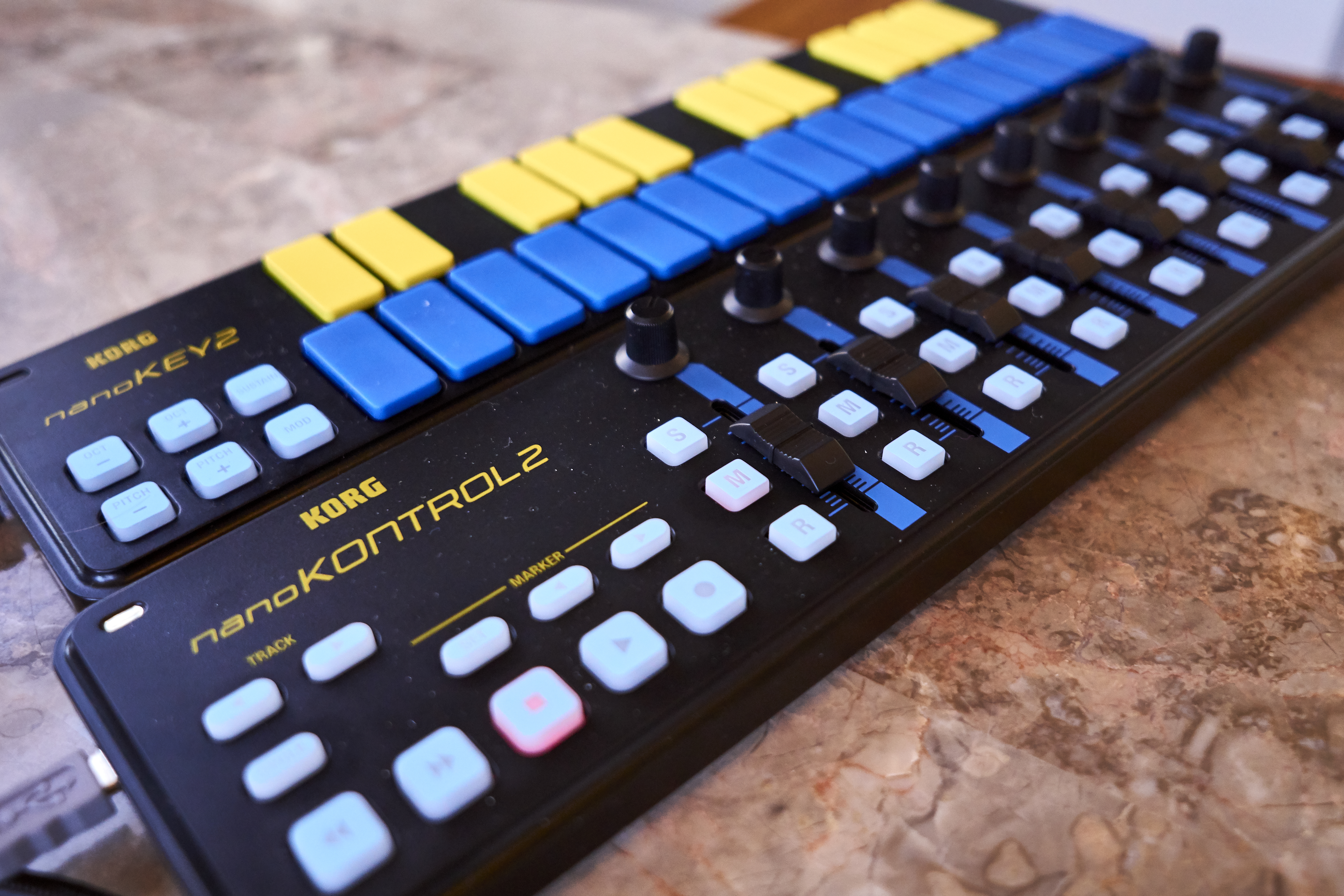
Korg nanoKEY2 and Korg nanoKONTROL2
These two little guys were amazingly useful. The nanoKEY2 is a 25-key, USB bus-powered, compact MIDI controller that’s velocity-sensitive and features octave up and down buttons, sustain, pitch+ and pitch- and a Mod button. I picked up the easy-to-see blue and yellow key version and found it useful to trigger pads or play basic keyboard parts. The nanoKONTROL2, which is the same size as the nanoKEY2, is also bus-powered; it features eight touch-sensitive faders (which actually feel pretty good!), eight rotary encoders, transport controls, Solo, Mute and Record controls on each channel, and even cycle, markers and track advance buttons.
The included Korg Kontrol Editor software lets you customize the controller. We used it quite a bit to run Avid Pro Tools 12 and move faders in real time on plug-ins such as the Vienna Smart Orchestra, and it quickly became a must-have to help us flow with sessions. It was especially useful when tracking and muting clicks, punching in and out, and just basically making quick level adjustments. We also enjoyed the cool cases from Sequenz that fit these models, which helped protect them for the trip down.
Korg • www.korg.com
Rich Tozzoli’s Fourth Annual St. John Recording Retreat, by Rich Tozzoli, May 26, 2017
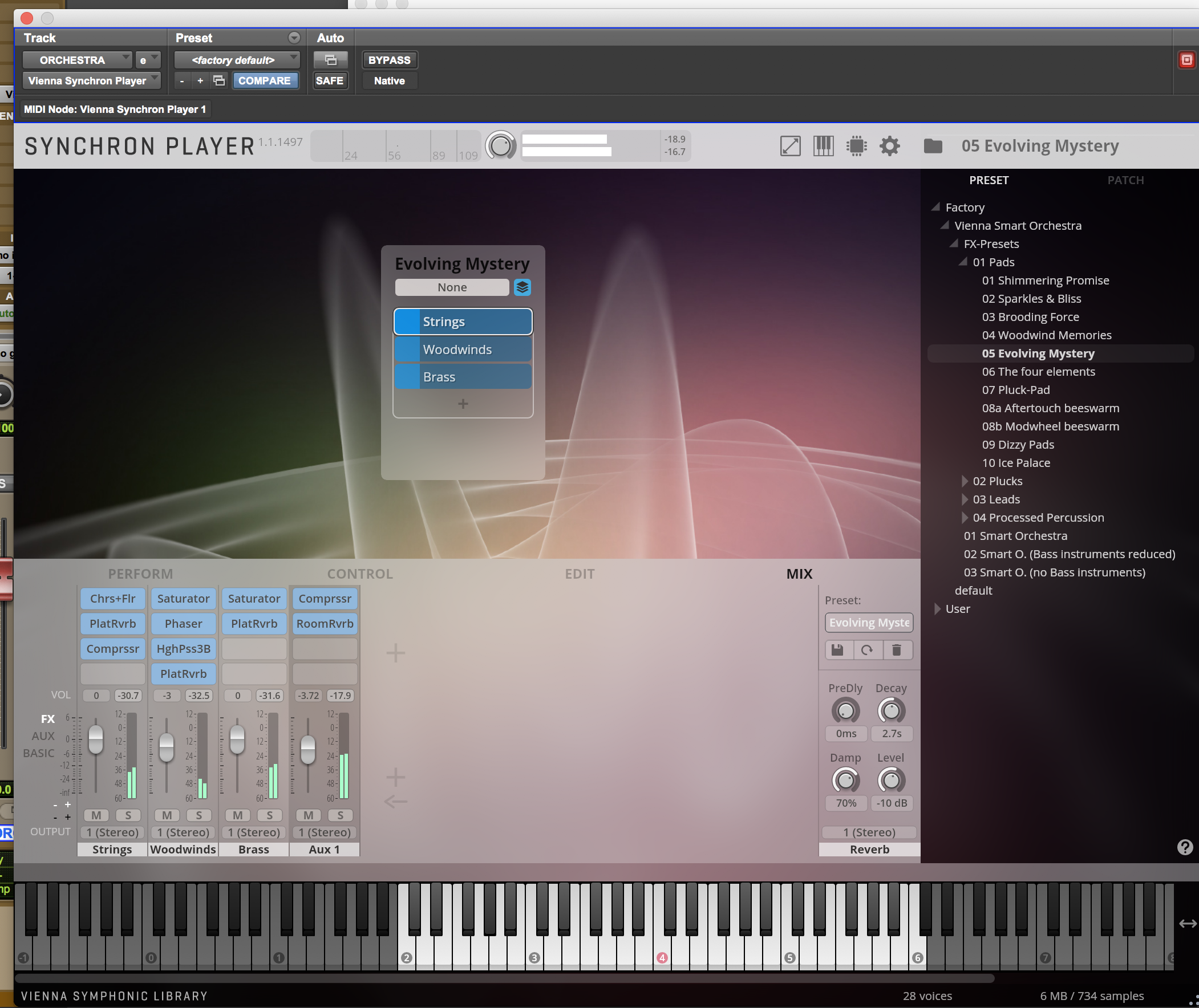
Vienna Smart Orchestra
Vienna Symphonic Library’s website says of Smart Orchestra, “Playing a 140-piece orchestra on the keyboard has never been easier and more rewarding.” Simply put: I have to agree. I’m a longtime Vienna user and can compare it directly to its other products.
The Vienna Smart Orchestra, which was recorded at the Synchron Stage Vienna and uses the new Vienna Synchron player, is a powerhouse of creativity—but don’t just think of this as string, brass and orchestral sounds. It’s actually an orchestral sound design and soundscape tool unlike anything else in my arsenal. Calling it up while looking out over the Caribbean at 7 a.m., which is when I started each day’s writing, was inspiring, to say the least.
Smart Orchestra runs lean at 9.9 GB (with a 4.4 GB download). It features a full orchestra and percussion with and without mallet sections, access to individual sections, separate full-range solo instruments (horn, trumpet, violins, flute, oboe, clarinet, trumpet), a variety of articulation types, pads, a huge variety of effects and FX presets. It’s built on the new Synchron Player, which is much easier to use (and more colorful!) than other Vienna offerings.
I won’t dig much into the more traditional part of this plug-in, which is the Smart Orchestra itself, and will instead move right to my favorite part—the FX presets—which are not exactly what you would expect from Vienna.
Opening 05 Evolving Mystery in the 01 Pads dropdown folder, for example, you get strings, woodwinds and brass all playing at once, but when you hold a key down, you hear flanging, reverb, delays, saturators, phasers and compression. It’s a deep, edgy, wild soundscape that’s perfect for creating moody cues. Using the Mix tab, you can raise, lower or mute any of the faders; using a MIDI fader controller (such as the Korg nanoKONTROL 2), you can ebb and swell the orchestral sections and Aux tracks in real time. You can also add solo instruments, which can be sonically useful. Note that if you roll over any of the knobs, faders or buttons, a text window pops up with an explanation of what it is/does, which can make for quick learning. Taking it a step further, the FX Presets folder also includes Plucks, Leads and Processed Percussion.
Vienna Smart Orchestra goes far beyond a traditional orchestral tool. It’s easy to use, fun, light on the computer and super creative, and the new Synchron Player interface is excellent. The sound, which is really what it’s all about, is what you would expect from Vienna—first class all the way—yet it’s available at a very reasonable price point of under $200. I hope they include even more FX presets in the next release because they are so useful. Overall, I highly recommend Vienna Smart Orchestra.
Vienna Symphonic Library • www.vsl.co.at
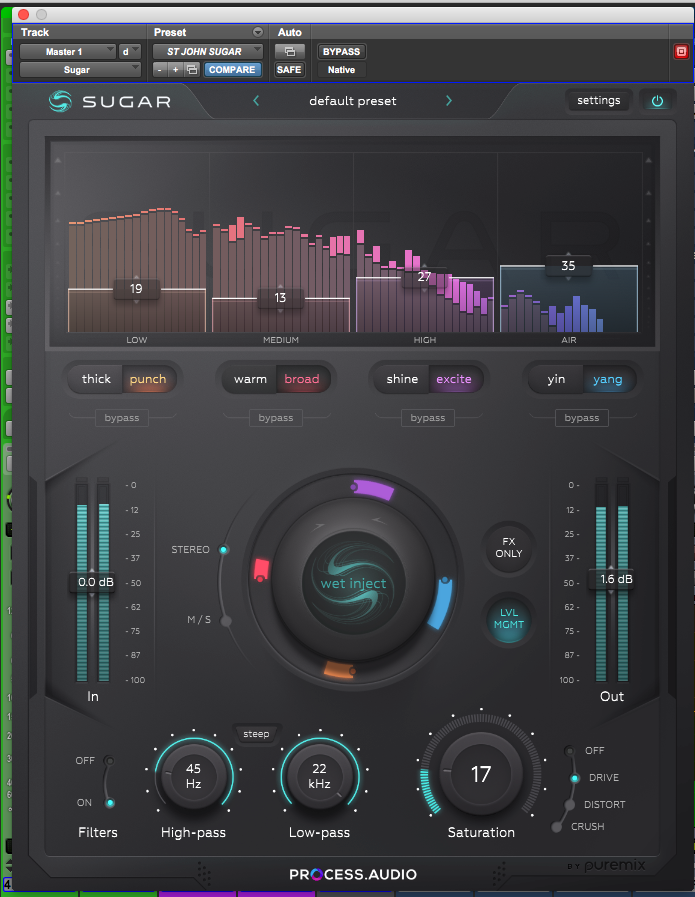
Process Audio Sugar
Process Audio’s Sugar was so new that none of us knew exactly what it did when we tried it out. It turns out that Sugar is a full-spectrum mono, stereo or M/S audio sweetener with a few analog-inspired twists up its sleeve.
It’s interesting to work with a plug-in that uses colors to help you hear. Sugar features four colored Band Faders for Low, Medium, High and Air, each with its own fader, which splits into two when MS Mode is selected. Each band has two switches below it with a different processing chain for tonal shaping of thick/punch on the Lows, warm/broad on the Medium, shine/excite on the High, and yin/yang on the Air. These may or may not cross over the band next to it, so you just use your ears. You can also bypass each band individually with the Bypass buttons.
Third Annual St. John Recording & Review Retreat, by Rich Tozzoli, June 9, 2015
Link to video 1 and video 2
There are in and out meters aside a unique jog wheel (Wet Inject) that lets you raise or lower all four faders at once, which they like to think of as a VCA for the Sugar faders. Next to that sits an FX-only button, which lets you hear what the bands are adding in isolation, and below that is a Level Management button, which helps compensate for the process generation. Then you’ve got High Pass, Low Pass and Saturation knobs, as well as Filters on/off and Saturation Types of Drive/Distort/Crush. Besides the presets and settings up top, that’s all there is to it—but that’s also the beauty of it.
Strap it on your master fader and twist the Wet Inject knob up; all four bands will visually and sonically push at once, and you sure will hear it. Alternately, you can grab a band and push that up as much as needed. Note that you cannot drag the bands to change the crossover points, which was included in the design for simplicity.
I was able to use Sugar in a variety of ways: pushing the lows up on an 808 kick, punching some acoustic out with Highs and Air (which is especially nice) and getting keyboard pads to scream using all the bands and the Crush feature. I found it most useful on our trip as a master fader tool to enhance the whole mix, especially on the pulsing crime/drama tracks, where it made the low drums, bass, sound design elements and percussive highs all sound better as a whole. You can push it a lot or a little. We also used it to get some extra volume, in a tasty way, out of the whole mix—especially with Level Management enabled.
There are times when you need a variety of tools to get the harmonic enhancement job done in a specific way, and there are times when you want a simple tool that can get it done with less effort and with a bit of color thrown in. That’s where Sugar shines. With a few twists, you can get individual elements or the entire track jumping out of the speakers.
Process Audio • https://process.audio/
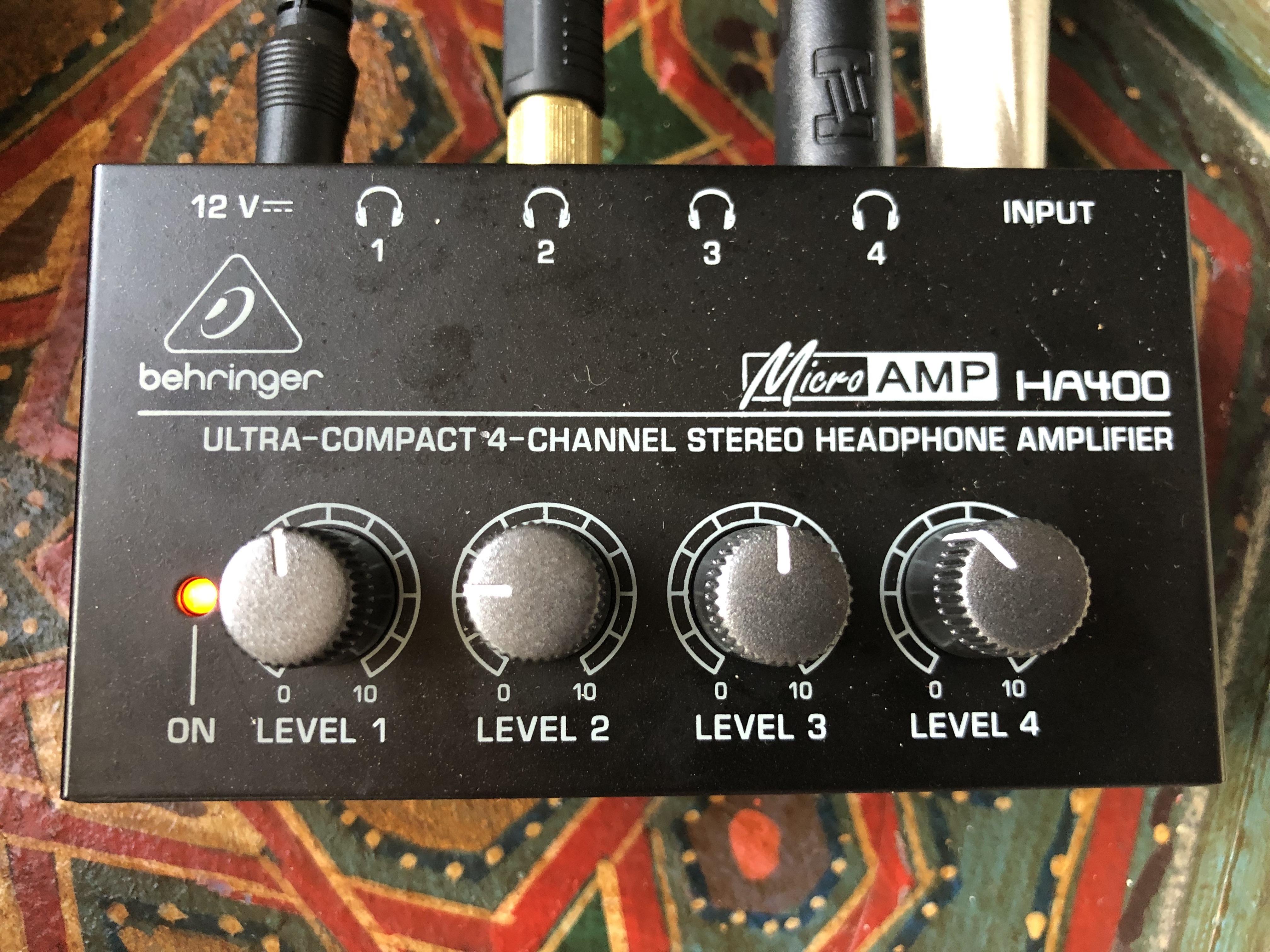
Behringer MicroAmp HA400
I picked up this 4-channel headphone amp at the last minute because I had forgotten whether or not I left a headphone amp at the house last year. I’m glad I bought it—the Behringer MicroAmp HA400 is ultra-compact, crazy useful, crazy small and sounds great. Powered by a DC 12-volt adapter, it’s got four independent TRS headphone outputs, each with volume control, and a mono/stereo input to feed your source into. It puts out plenty of volume, weighs a bit over 6 ounces, didn’t break up when pushed, and can literally fit in your pocket. Small, simple, easy.
Behringer • www.behringer.com
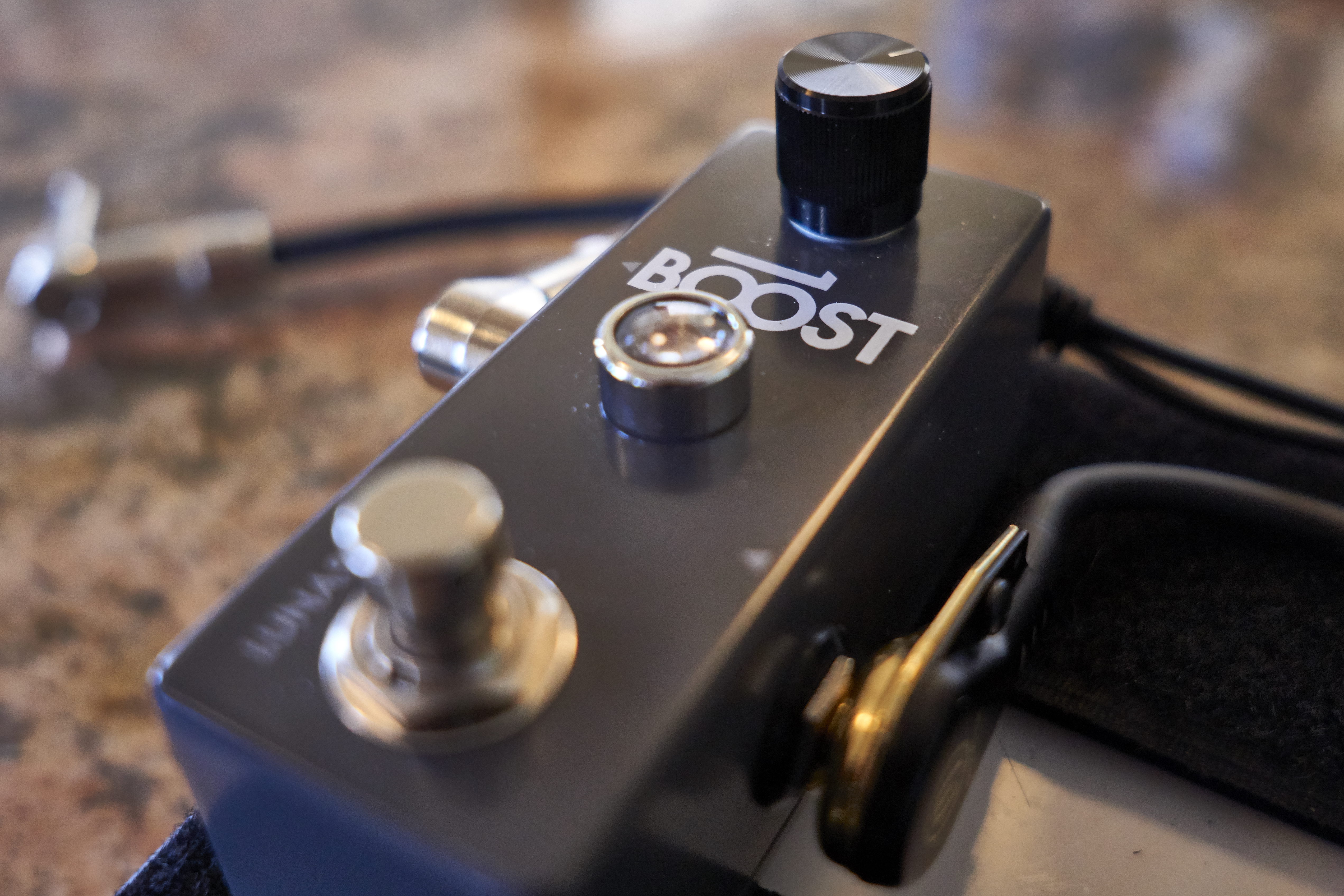
LunaStone Boost 18
Keeping with the small-yet-powerful theme, the LunaStone Boost 18 pedal had quite an impact. Since all of my guitar and bass sounds on this trip were DI and not through an amp, some creativity was in order. The Boost 18 sat at the end of my small pedalboard, and with its one knob, it couldn’t get any easier to use. With up to 18 dBs of clean boost and True Bypass switching, it doesn’t just push out a clean sound. The Boost 18 added a touch of low mids and thickness while at about 9 o’clock. As you push it up higher, there’s a bit of dirt that starts to happen that definitely sounds like a natural overdrive, but in a subtle way. I used it to push my guitar tone, a hot-rodded Telecaster, through another pedal with additional tone controls, and it ended up living around the 12 o’clock position for most every track. The clearest indicator of a great pedal is that you miss it when you take it out, which is what happened with the Boost 18. This is not just a clean boost; it’s a thickener with some analog attitude.
LunaStone • www.lunastonepedals.com
Tozzoli’s St. John Recording Retreat Featuring AEA, DPA, Fender Passport Studio, Grace Design and Universal Audio, by Rich Tozzoli, June 6, 2014
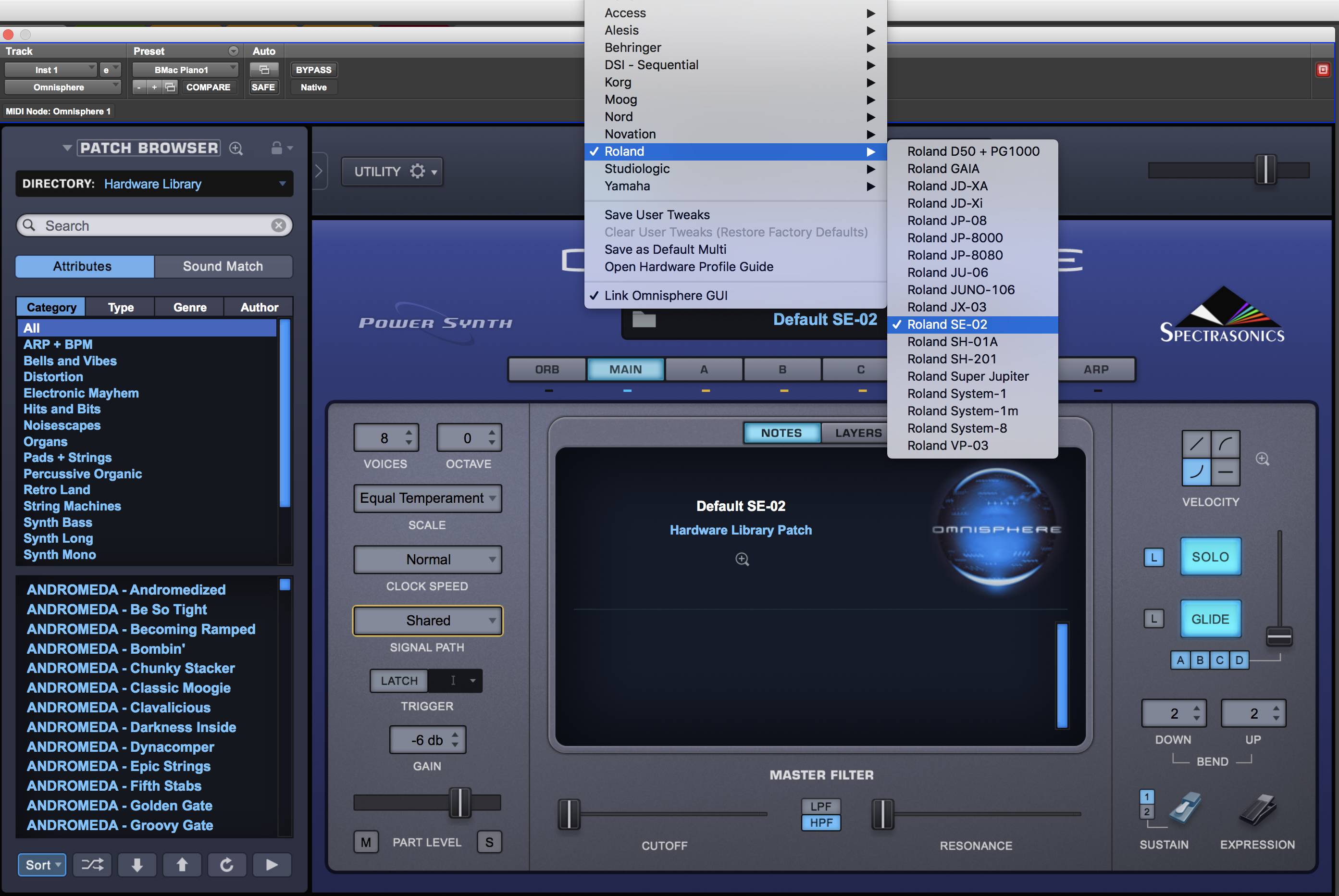
Spectrasonics Omnisphere 2.6
For those of you who know software synths, Spectrasonics Omnisphere is a flagship piece. It’s long been a part of my creative arsenal, and with the 2.6 update, we had to have it in our bag of island tricks. Aside from a bevy of new sounds (over 1,600) and features like an enhanced arpeggiator, a standalone application, audio file import and an expanded synth engine, it now supports hardware integration, with more than 65 synths ranging from a few hundred dollars to many thousands. What this hardware integration feature offers users is the ability to bring physical control of Omnisphere from the user’s actual synth, effectively bridging the gap between both.
There was a little bit to learn about what it was and how it worked, so we figured it out on the fly in St. John. Since keyboardist Bruce MacPherson bought an analog synth with him (the Roland SE-02), we were able put this new feature to the test. Luckily, it turned out to be a lot easier than we thought.
Want more stories like this? Subscribe to our newsletter and get it delivered right to your inbox.
You connect the synth to your computer, open the hardware drop-down menu on the top of Omnisphere, and find the hardware profile for that synth. There are useful instructions included about how to set up your hardware unit to work with the software, so Spectrasonics have made it a fast-moving process. Note that if you don’t own any of the hardware units, you can still access any of the hardware library patches that Omnisphere offers (custom-created using that synths profiles). You can even tweak other software synths with your hardware unit, as certain parameters will still work.
We learned that the integration of hardware and software lets us do things that would not be possible otherwise. You can take the software to new places by simply having control over things like oscillators or filters and engaging with it, not just using a mouse to get where you need to go. While sometimes it was best to use Omnisphere, sometimes we used the real synth. That’s the beauty of it; it’s not meant to replace your synths but instead bridge both worlds and expand both. Omnisphere 2.6, with its hardware integration, is a great new technology that we were lucky to have with us.
Spectrasonics Virtual Instruments • www.spectrasonics.net

